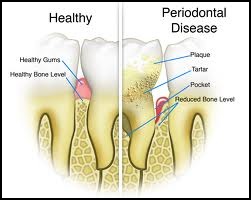This four-part article series provides an in-depth look at periodontal (gum) disease: what it is, how it presents, how it can be prevented and what treatment options are available for those who have it.
Welcome to the final installment of our four-part article series in which All On 4 specialists in Bellaire discuss periodontal (gum) disease. In an effort to understand what this disease is, how it destroys our oral health and what can be done to recognize and treat it; we have been talking to the dental healthcare professionals responsible for mitigating the damage done by this terrible oral affliction. Thus far, we have defined periodontitis, explained how it works at the microscopic level, looked at its signs and symptoms and how one might go about preventing it. In this article, the final installment of the series, we will explain the various treatment options available to patients.
What are the Treatment Options for Periodontal Disease?

One of the biggest problems associated with gum disease is that it doesn’t tend to cause people much pain or discomfort in its beginning stages. For this reason, it can be happily ignored for many years before one realizes they have a serious problem on their hands. A simple visit to the dentist would reveal this, but most people have the bad habit of only going for an appointment when something is wrong. If you don’t know that you have gingivitis or would rather ignore a bit of gum inflammation and bleeding than seek professional attention, your oral problems could be left to progress and worsen.
“I’ve noticed that my gums look a little redder, but they aren’t sore so it can’t be anything serious.”
“My gums bleed a little when I brush and especially when I floss, but they’ve done that for years, so I guess mine are a little weaker than most peoples’. I just don’t floss anymore.”
“My teeth don’t look all that good anymore, but I’m terrified of the dentist. If they start hurting I’ll seek professional attention... not a day before!”
All of these attitudes are terrible to have and tend to be consistent with those who are affected by gum disease. Your first step in dealing with periodontitis is the effort to prevent it, which requires regular scheduled appointments with the dentist and oral hygienist. If it’s too late for that, there are various treatment options available. Do note that the longer you ignore your oral problems, the more invasive, painful and expensive these treatment options become!
Non-Invasive Treatment: Gingivitis can quite easily be treated by improving your oral hygiene practices and by visiting the dentist and oral hygienist. Quitting smoking, improving eating habits and reducing alcohol intake will also vastly improve your oral health. For fully-fledged periodontitis, you could get away with treating it using a course of anti-biotic medication and with a strong anti-bacterial mouthwash.
Surgical Treatment: For advanced cases of periodontal disease, surgical treatment is often necessary. In order to eliminate diseased tissue and the accumulation of bacteria, infection and other nasty debris from beneath the gum line, a periodontist (gum specialist) will need to use invasive methods that might include laser therapy and deep root scaling and planing. The specialist may then apply a microbial paste directly to the affected regions before suturing your gums back up. Sound painful? You’ll be anesthetized, but it’s far from a walk in the park. This is why prevention is always better than cure!
If you’ve lost teeth as a result of gum disease, you should book an appointment with a dental implants specialist to have them replaced.






